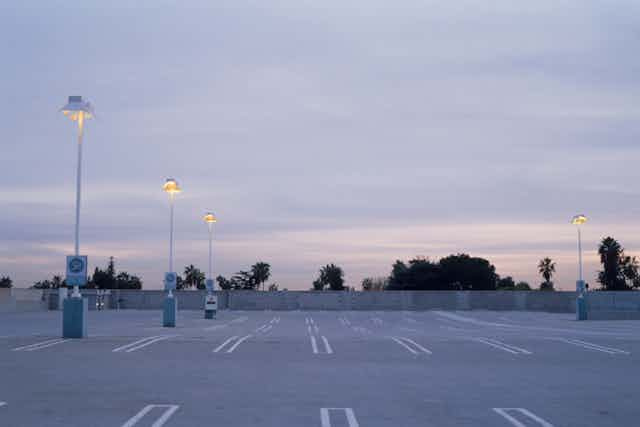The last few weeks have brought previously unimaginable changes to the lives of people throughout the United States. Americans everywhere are waking up to a new reality in which they can’t go to work or school outside the home and they have to stay six feet away from others. More than 80% of Americans are under such stay-at-home orders.
People are also seeing charts in the news showing rapidly increasing case counts. This is likely to continue to occur. The United States surpassed Italy and China to have the most confirmed cases of any country.
Americans might begin to wonder if these social distancing measures are working if the case numbers keep climbing. The problem is that the number of reported cases is not the same as the number of people who are infected. It takes time for people to develop symptoms, seek treatment and get tested and for the results to come back. So the effects of social distancing might not be obvious from the numbers for a while. As an epidemiologist at the University of Michigan, I can assure you that staying at home is one of the most effective ways to slow the spread of COVID-19.
A key reason for the delay between people severely restricting their movements and a drop in the number of new cases is that COVID-19 can have a long incubation period, the time between getting infected and becoming sick. The average incubation period is around 5 days, but it can be as long as 14 days or more. This means that a person infected before a stay-at-home order might not get diagnosed until days later.
Testing for COVID-19
Testing is another factor in the delay between the start of social distancing and seeing the results. Many Americans don’t even know if they’ve been infected with the new coronavirus – SARS-CoV-2. Though the United States is finally ramping up production of test kits in federal, state and private laboratories, there are stringent criteria on who can get tested. Testing is mostly limited to people with symptoms, frontline health care workers and first responders, and older people. However, scientists have found asymptomatic and presymptomatic transmission of COVID-19.

Asymptomatic spread has probably contributed to the explosive growth of COVID-19 in the United States. Overall, as restrictions on testing ease, case counts are going to rise because more people, including those with mild or no illness, will be able to get tested.
Finally, it’s important to note that current COVID-19 tests take 24 to 72 hours to generate a result. Even in China, where testing is widely available, the average time from the onset of symptoms to a diagnosis of COVID-19 is five days. It takes one to three days to get test results because the tests discover whether the virus’s genetic material is present inside a patient’s body. This requires replicating the virus’s genome using specialized laboratory equipment. Scientists are developing tests that look for telltale signs of the patient’s immune system response to virus, and these blood tests should provide quicker results.
Believing can help make it so
Unfortunately, people will, for the next few weeks, see increasing case counts even as they might be rigorously complying with government directives to avoid contact with other people. The lag time in reporting cases could make people feel that the actions they’re taking – staying at home and limiting in-person social interactions – aren’t working.
When people think that what they do works, they’re more likely to do it, a concept known as self-efficacy. It turns out to be an important predictor of human behavior. For example, people who expect to be able to quit smoking are more likely to quit. As self-efficacy diminishes, people could become less motivated and relax their adherence to stay-at-home orders.
Experience from previous pandemics in the 21st century shows that people’s behaviors and attitudes change over the course of the outbreak. As the 2009 H1N1 pandemic progressed, people became less likely to want a vaccine and to perceive themselves at risk. Researchers who conducted monthly interviews with Hong Kong residents over the course of the SARS outbreak found that people’s perceptions of the effectiveness of staying at home and avoiding going to work decreased as the outbreak wore on.
If Americans see increases in case counts and believe that their own actions are ineffective, they might be less inclined to follow through on social distancing. This could lead to increased contact among people, which could make it more difficult to bring the pandemic under control. Hopefully widespread testing and faster test results will lead to a more accurate understanding of who is and is not infected with the disease, not unlike what South Korea has accomplished so far. In the meantime, Americans should not take an increase in COVID-19 cases to mean that their sacrifices aren’t worth sustaining.
[Get facts about coronavirus and the latest research. Sign up for The Conversation’s newsletter.]

